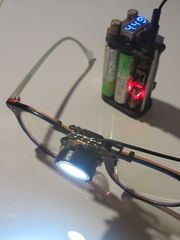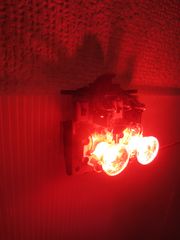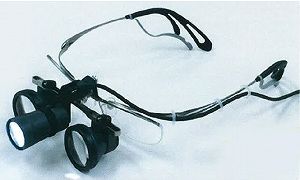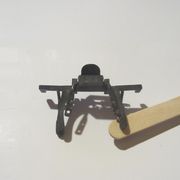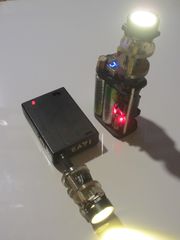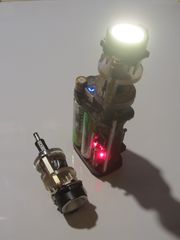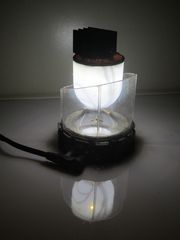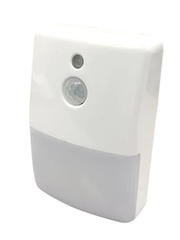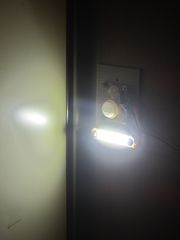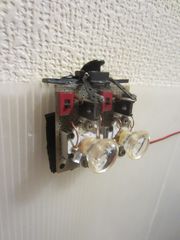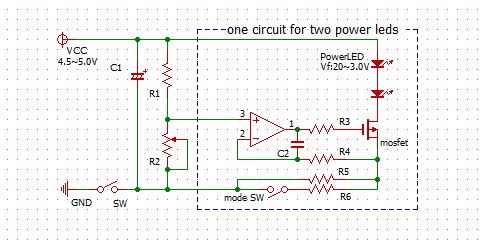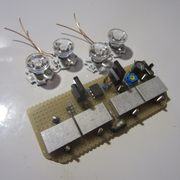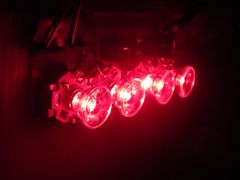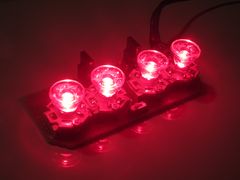First, please see the following site, which shows the results of a clinical experiment that LED light can restore vision.
Optically Improved Mitochondrial Function Redeems Aged Human Visual Decline | The Journals of Gerontology: Series A | Oxford Academic
In summary,
The function of mitochondria in eye cells declines with aging, and this can be restored with LED light at a wavelength of 670nm. Mitochondria are like power plants, supplying energy for cellular functions.
It is the light at 670nm wavelength that activates the mitochondria. Subjects are exposed to this light for 3 minutes every morning. The output is 40 mW/cm2.
Researchers say that vision can be restored in people over the age of 40. Younger people don't have much loss of function, so it's unnecessary.
If I could do electronics, this is what I would want to build.
LEDs with a wavelength of 670 nm are available. It is possible to adjust the output power of 40 mW/cm2 at the ocular surface, but it is a hurdle to adjust it exactly.
Besides, irradiating for 3 minutes every morning is also a hurdle for a lazy person (lol).
Researchers have also suggested that this item could be marketed (right image).
It has even been spotted being used in first class on international flights. Is it a one-off a piece?
Being a sloppy person, I decided to make this a part of my life.
I used it as a bedtime reading light.
The eye will be exposed to the light reflected from the paper. Although the light source is powerful enough, the output of light that the eye receives is much weaker than "40 mW/cm2". By using it over a long period of time, we could try to restore vision within a safe range of output.
I don't know if it restores eyesight as the researchers boldly claim, but when I started using it, my eye strain was clearly gone. I can feel that it is quite effective without any special tests.
The circuit is the same as that of general-purpose LED lamps and is operated with an AC adapter. 2 lamps are placed side by side with a switch attached to each, each having a high output of 200 lumens of illumination. A collimator with a half angle of 10 degrees is attached to the lamps. Of course, it is not for direct viewing.
Simply mounted on the pillow side wall of the bed.
In the left image, the leaked light only stains the surroundings, but the collimator's irradiated area is illuminated by strong light.
4. LEDs for plant breeding
The wavelength of the above LEDs is 680-700 nm, which is slightly longer than 670 nm. Although we were still able to confirm the effect, there is nothing better than using a more precise 670nm LED. It was created with LEDs for plant growth, which have a wavelength of 670 nm.
The circuit is also driven by a constant-current circuit using an OP amplifier and MOSFETs, which facilitates higher efficiency and output.
The current to the LEDs should be controlled individually, but here two lights are connected in series.
Since the Vf of a single LED is 2.0 to 3.0V, if the supply voltage is greatly exceeded, the excess heat generated by the mosfet will result in a large loss.
As shown in the circuit diagram, the constant current circuit is controlled in two modes by a SW. The current can also be increased or decreased by fine-tuning the Vref of the OP amplifier using VR.
This Vref should also be as small as possible to minimize losses at R5 and R6.
Since it is not battery powered, losses are not a major concern, but I want to reduce heat generation by minimizing losses in each part.
As a side note, when soldering PowerLED to a special board, put a thin layer of solder on the board side beforehand. If you try to solder it suddenly, it may not adhere well. Solder in a short time because heat can easily escape.
I simply clipped it to the wall and used it as a reading light.
I did not notice much difference compared to the previous one. Slightly different color tones when compared in the image.
The previous one had a maximum of 400 lumens, this one has a maximum of 800 lumens. I use about 600 lumens. the TIR (collimator) is 10 degrees and is required for reading.
It is interesting that LED light for plant growth activates mitochondria in eye cells, and clinical trials on vision restoration have proven its effectiveness. 670nm wavelength light is a wonder.
As a side note, for plant growth, the 670nm wavelength light is used as the main light source in combination with blue LED light. Only 670nm wavelength light is used to restore eyesight.
